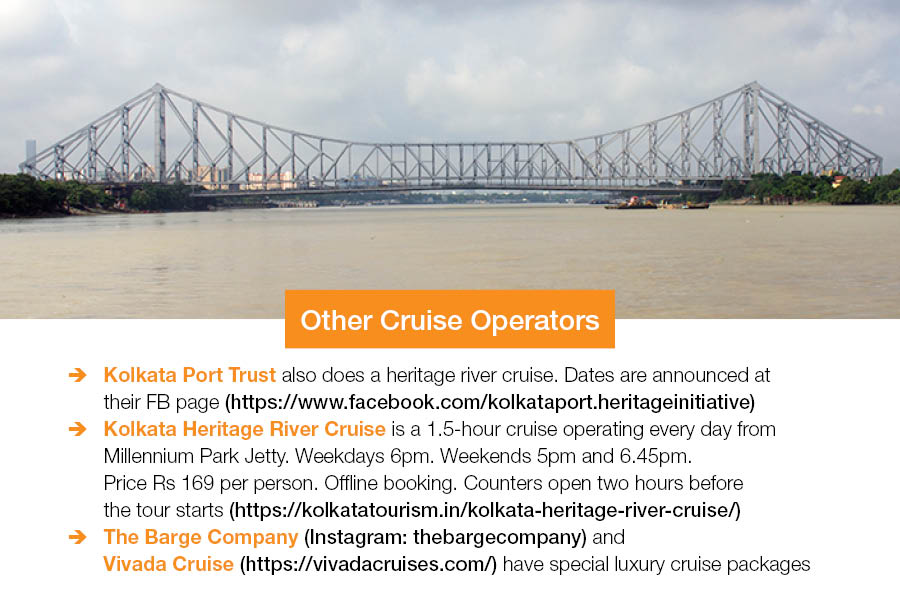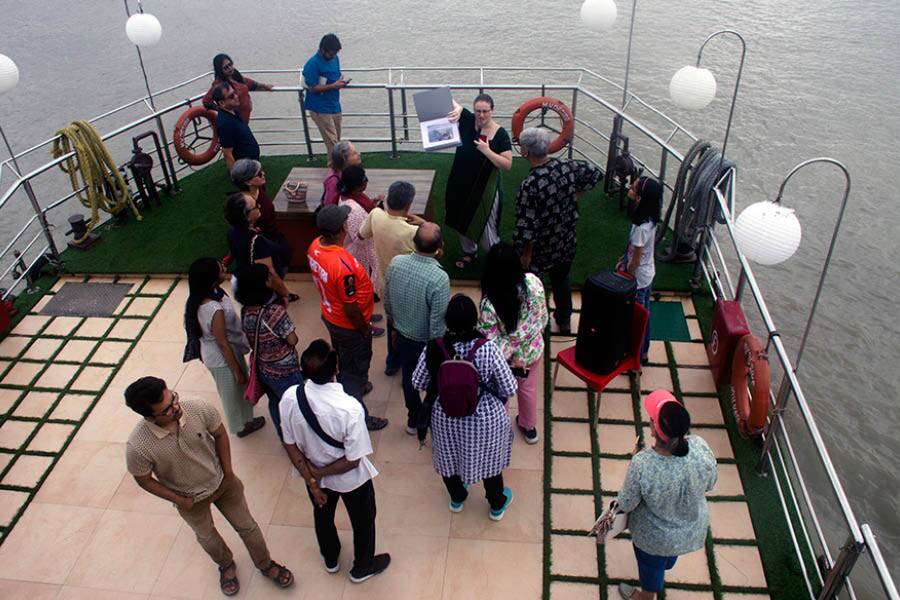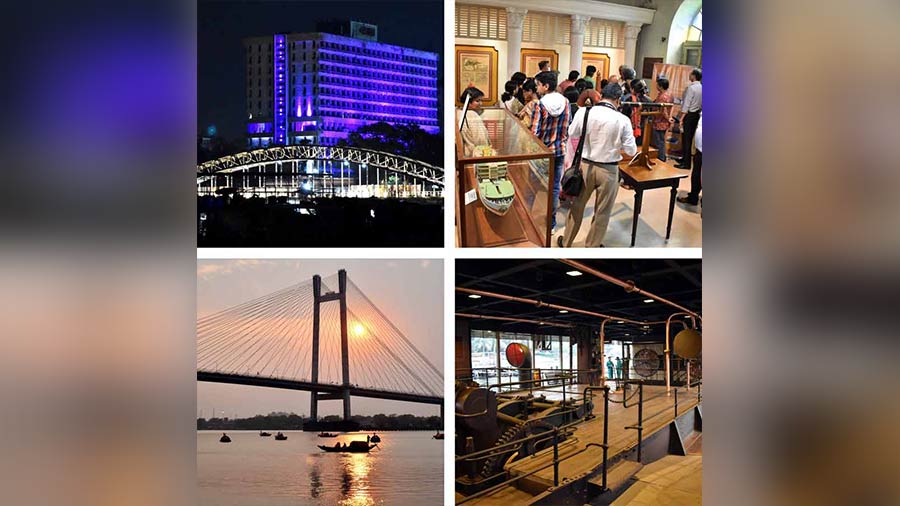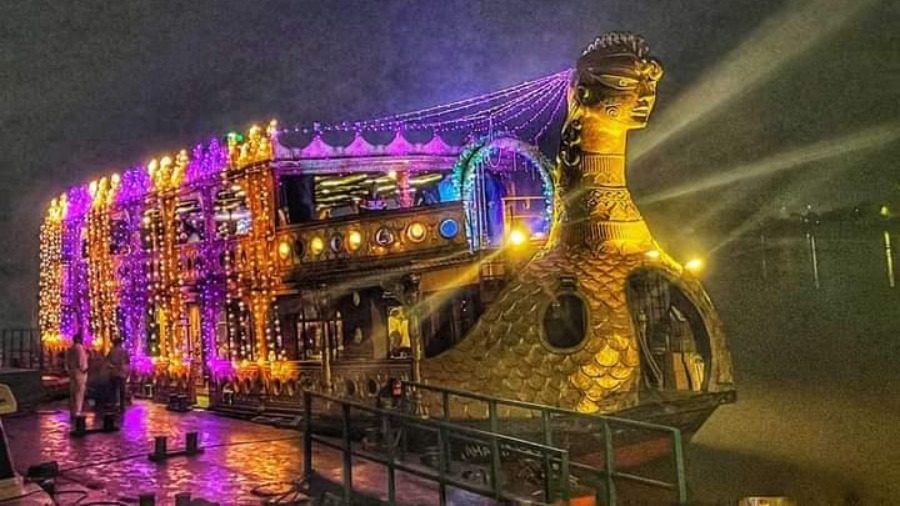Calcutta (now Kolkata) was once a collection of hamlets on the east bank of the mighty Hooghly river. The collection of hamlets soon transformed into a mighty city and was considered as the second city of the mighty British empire. Through the entire history, the river has played a vital role in the rise and growth of Kolkata. Immersive Trails Global along with The Barge Company is coming up with a morning heritage cruise of the Hooghly river.
A slice of history
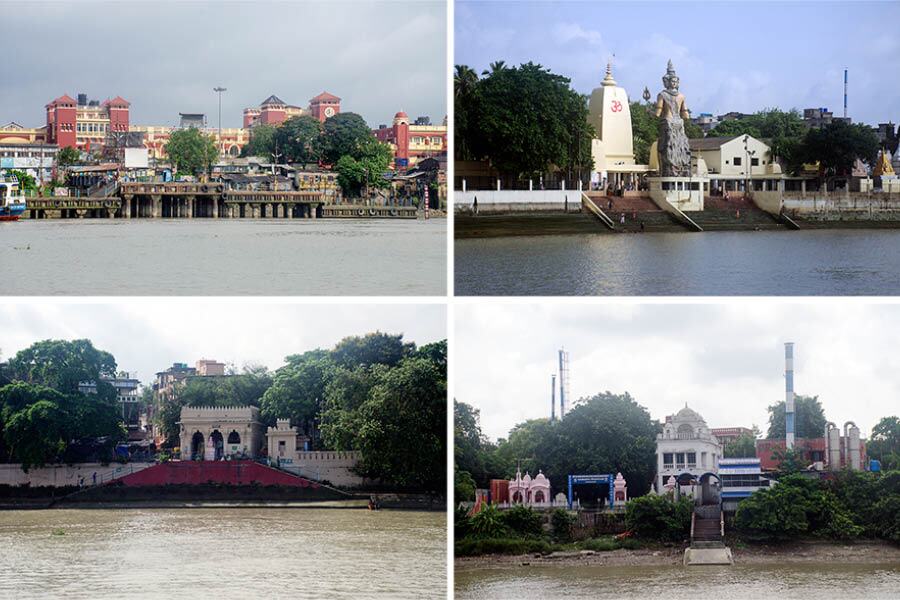
(Clockwise from top left) Howrah Station, Naya Mandir, ‘Samadhi Prangan’ of Ramakrishna Paramhansa Ratan Babu Ghat and Kumartuli Ghat.
Officially known as The Hooghly Breakfast Club – Morning Heritage Cruise, the journey starts from the River Police Jetty, just south of Babu Ghat, at 7.30am under the guidance of Chelsea McGill, co-founder of Immersive Trails Global.
McGill originally from Ohio, USA, is a linguistic anthropologist. A large part of her research work was in Dhaka, Bangladesh and no wonder she is fluent in Bengali. Her narration starts with the stories of river shifts and how it shaped the city. McGill used her great story-telling skills to narrate the history of the iconic buildings along the river. The unknown tales of the numerous ghats to crematoriums and on to the riverside shrines, there was no end to the stories. The story narrative continued as the cruise made its way beneath the Howrah bridge and headed north.

Participants with the Immersive Trails Global team on board MV Desire with the Second Hooghly Bridge or Vidyasagar Setu in the backdrop.
The floating stock
MV Desire, a 70-capacity catamaran of The Barge Company, was responsible for ferrying the passengers along the Hooghly. Equipped with an air-conditioned banquet, the vessel has an open upper and lower decks. Tea, coffee and packaged juice were served on the top deck. The guest enjoyed the fresh breeze with a sip of their favourite beverage while enjoying the ripples of the meandering Hooghly.
Onwards to Baranagar

A collection of floating stocks along the Hooghly. From cargo ships, passenger ferries and makeshift rafts.
McGill’s narrative continued as MV Desire headed past Howrah station, Ahiritola, Sovabazar and Bagbazar. It made its way past numerous other floating stocks comprising large cargo ships to floating rafts. About an hour of surfing the MV Desire finally docked at Kuthi Ghat in Baranagar, located bang opposite Belur Math.
Exploring Baranagar
The terrestrial exploration began with the origin of the name Baranagar. McGill narrated: “It is commonly believed that name originated from pig (baraha) and the former Dutch settlement once had a large piggery. But the name Baranagar appears in accounts of Chaitanya. He made a stop at Baranagar on his way to Puri. That was about a century before the Dutch arrived.”
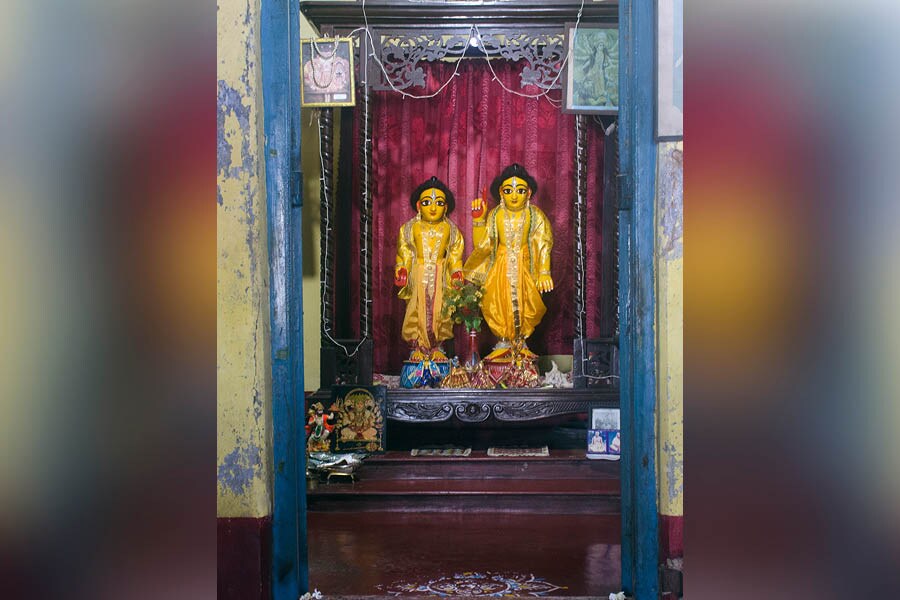
Wooden idols of Radha and Krishna at Kantha Dhari Math, Baranagar.
So the name ‘Baranagar’ quite likely doesn’t have a Dutch connect but the Kuthi Ghat does have a Dutch connect. Famous Dutch anthropologist Bauke van der Pol, mentions in his book The Dutch East India Company in India: “In Baranagar, the VOC (Dutch East India Company) owned a house within a stone’s throw away from the river.”

Known as the Dutch Kothi, it was demolished about a decade back. It has given way to a boxish apartment building but the ghat still holds the memories of the Dutch connect. The other stops of the Baranagar trip included the 1866 established Victoria School, which was the first English medium school on the outskirts of Kolkata. The second stop was the Joy Mitra Kalibari. A heavily encroached temple complex, where the century-old temples have been given a new look. The third and final stop was Kantha Dhari Math, a temple where Chaitanya was believed to have left his kantha (shawl). The kantha has long vanished but the small shrine houses a beautiful wooden idol of Radha-Krishna.
Grand breakfast spread
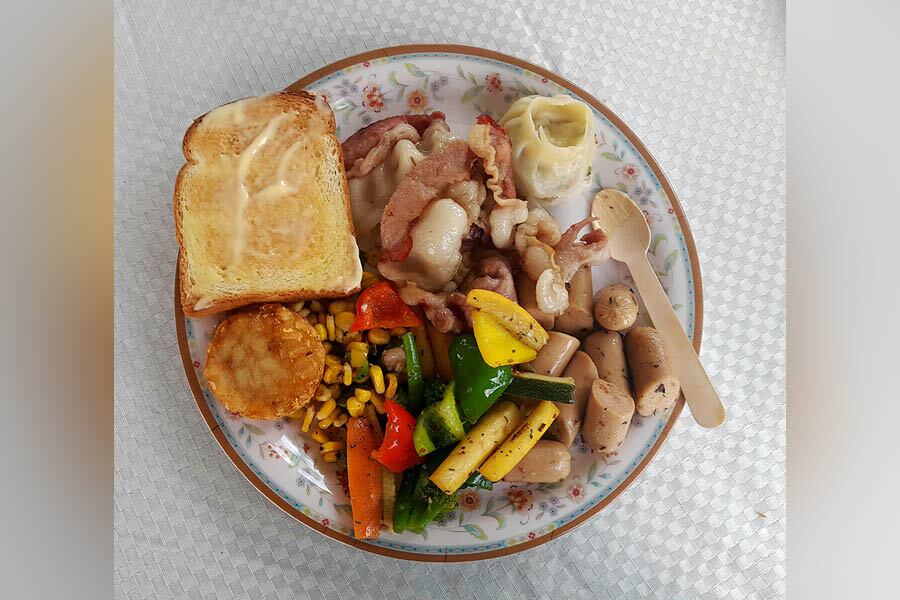
The grand breakfast served by Cup eBong comprised toast, chicken sausage, bacon, sautéed vegetables and much more.
The return journey was marked by a grand breakfast spread offered by Cup eBong, a café based at Hindusthan Park in south Kolkata. MV Desire sailed past the majestic Belur Math with hungry souls munching on bacons and sausages and gulping those down with cups of hot tea or coffee. The tour ended at the River Police Jetty around 11am.
Organiserspeak
Tathagata Neogi, McGill’s husband and co-founder of Immersive Trails, said: “Most of the Hooghly cruises are sunset cruises. Ours is a morning cruise and we focus on the historic narrative of the river. This is what makes our cruise unique.” He added: “The breakfast cruise was a regular affair in the pre-pandemic days. We are restarting it all over again with a new partner. After our inaugural run on July 7, we have plans to run it every month.”
